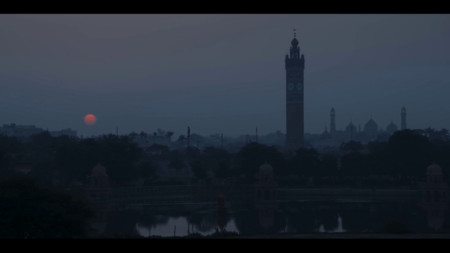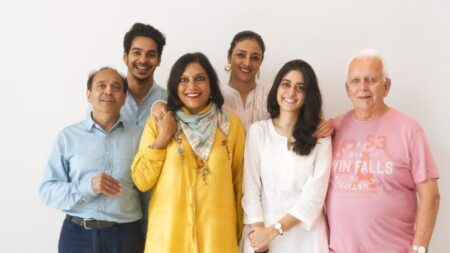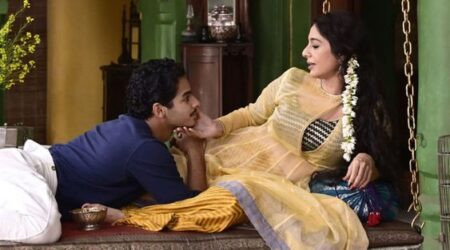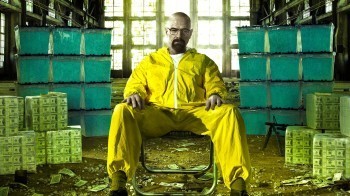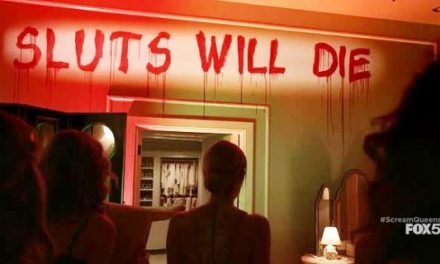Back in July 2020, the BBC began screening its new Sunday night serial on BBC One in an attempt to bring an adaptation of Vikram Seth’s very long, 1993 novel to a mainstream British audience. This blog is not a review of the serial, nor of the critical response to it, which, for reasons which will become clear, would take a lot more time and effort than I currently have. Instead, I want to use my response to the first episode to reflect on the complexities of viewing which are normally hidden by the ease with which we manage it.
I was interested in A Suitable Boy because it seemed to indicate a shift in how issues of diversity were being handled in British television drama. The call for casting to be more diverse and for Black and Asian actors to be given a wider range of roles has extended into a demand for a wider range of experiences to be put on screen so that the stories of those from different ethnic backgrounds could be told. A Suitable Boy, adapted from a hugely successful novel by an Indian writer and set in India with an Indian cast, was seeking to extend a traditional television genre, the classic adaptation, in a cross-cultural way. While it was a book that would be well-known to many British viewers, it would be unfamiliar to many others, including me, and, unlike other examples of period drama based on English classics such as Oliver Twist and Pride and Prejudice, there are no preceding adaptations to provide a template.
I was looking forward to the first episode and was surprised when I was so disappointed that I nearly didn’t carry on into episode two. The main story in the serial is that of a lively university student, Lata, who embarks on a quest to find love and freedom while she is being badgered by a mother who is determined to arrange her marriage to a suitable boy. The story is set in North India in 1951-52 and Lata’s quest for independence is a metaphor for that of India as a new nation; her struggles with romance are paralleled by the political, religious and social struggles that are taking place around her.
My problems covered a number of areas including:
- The female characters. Lata’s naivety and charm lacked the irony of Austen’s heroines and at times her enthusiasms seemed almost witless (Fig 1). Her mother was written and played as a caricature even by the standards set by Mrs Bennett in the various versions of Pride and Prejudice which offered an obvious comparison. The vampish Saeeda predictably charmed the men with her sexual allure.
- Places and people. The episode began with the celebration of a marriage and presents scores of characters in overlapping relationships and settings. It looked as if the storyline was being set up to follow the fortunes of a number of families but identifying relationships was very difficult. Siblings and in-laws proliferated, children were looked after by a variety of family members, restless adolescents challenged parental figures and threatened family values. Some characters lived in the main town, others in Caluctta, while Lata and her mother appeared to have no fixed home and travelled around, staying with relations.
- Politics and religion. One of the of the storylines concerned a temple being provocatively built beside a mosque. A seemingly progressive politician wants to calm down religious hostilities, others apparently do not: ‘A Hindu holiday for a Hindu nation’ intones a government minister about Holi celebrations. ‘We are a Hindu nation, Muslims have their own country now’ declares the same politician after Muslims are shot in a demonstration about the temple.
- Aesthetic tone. While the production design drew attention to the detailed reality of India in the early 1950s, the visual and aural aesthetic also emphasised the exotic: the misty dawn over the river, the silhouette of city skyline at dusk, the pleasures of gauze and silk in the brilliantly colourful costumes, the musical rills of the sitar. If the BBC audience is supposed to be learning something about India as a huge social democracy, does this aesthetic tone push a different version of ‘India’ which leans towards the exotic and oriental? (Fig 2)
- All the characters in this episode are Indian but English is the dominant language. There is some dialogue apparently in Hindi and Urdu but most conversations are in English spoken with a marked Indian accent. In British adaptations of non-English language novels, the characters speak English (without a national accent). So, was this use of English a result of the novel being written in English or an appropriate acknowledgement of the class and education of the characters or simply convenient for the British audience?
A Suitable Boy thus challenged my reading competences (a term I take from debates about soap opera viewers in the 1980s). Quite how far it did so was brought home to me by conversations with my friend Roy Stafford who knows much more about India and Indian cinema/television than I do. From these discussions, I began to establish how some of these issues might appear to a viewer with some familiarity of film and television production in India. The kind of knowledge I needed to understand (and judge) A Suitable Boy began to emerge.
In terms of authorship and control, all six episodes were directed by Mira Nair who signed herself up for the project very early on. Stafford pointed out that Nair is ‘a distinctive filmmaker whose work has developed over a long career, much of it spent shifting between India, Europe, Africa and North America.’ ‘From an Indian perspective, Nair became one of several “diasporic directors” making films that, while clearly connected to certain types of independent Indian films, were also seen as ‘international’. Stafford also pointed out that Nair tends to use long term collaborators on her films in key roles such as costume designer, cinematographer, composer and production designer; ‘The crew was basically Indian with selected British/Americans . . . most of that [their] experience comes from feature film production rather than TV series.’ Asked about the difference between making TV and making films, she answered that she thought of A Suitable Boy as a ‘long form cinema project’. It may be that this immersion in cinema meant that some of the conventions of episodic storytelling were less important to Nair in the first episode than establishing tone, atmosphere and the clash of characters. (Fig 3)
By contrast, Andrew Davies who wrote the script is steeped in television, used to working with an episodic structure and to cramming a host of characters into a restricted timeline. It may be that the over-riding narrative line in the first episode, voiced by Lata’s mother as the necessity of finding a suitable boy, is the scriptwriter’s attempt to help the BBC viewer find a way into the story. Davies’ involvement was sharply criticized as depriving Indian writers of an opportunity and of missing the depth which personal experience would have brought to the storytelling. For discussion of this and other production personnel issues see Stafford’s article written before the serial screened.
In terms of characters and narrative, Stafford’s knowledge of the actors involved gave an indication of how much I was missing. The first episode would have been much more comprehensible and interesting if I had known something of the performers’ performance history and reputation. For instance, Saeeda is played by Tabu, the ‘biggest name in the cast list’. She was born into an acting family ‘with many members in all kinds of roles in different Indian film industries’ and was acting in films by age 16. She is ‘one of the most celebrated film actors in India’ and had previously worked with Nair in The Namesake (2006). In other words, Saeeda was played by a star followed by a mass of fans for her beauty, magnetism and musicality and would carry that over into this story. (Fig 4)
It was also significant that Lata was played by the relatively unknown and inexperienced Tanya Maniktala while her young, impulsive brother-in-law who is also rebelling against his family (and falls for Saeeda) was played by Ishaan Khattar who has had a meteoric rise to lead status in Hindi cinema. The various men who occupied patriarchal roles could have been distinguished more readily with knowledge of their well-established careers in film and television. In this casting, A Suitable Boy was using the practices which British television also follows by casting familiar faces in secondary roles in classic adaptation.
In discussing the aesthetic tone, Stafford pointed out that images of beautiful scenery and landscape were a feature of Indian films and television For me, they might be best understood as a version of the kind of ‘heritage’ imagery of British classic adaptations with the emphasis on displaying landscape, architecture and costume. In many classic adaptations, such imagery is strongly associated with ownership and class. In A Suitable Boy, it may be that this kind of aesthetic is more strongly associated with national pride and with romance. After all, Lata’s first date with a boy who turns out to be unsuitable is a boat trip to appreciate the beauty of the river at dawn.
Stafford confirmed that the questions about languages used was certainly complicated and it was interesting to learn that the use of English was one of the main complaints by Indian commentators. In the Hindustani Times, for instance, Rohan Naahar wrote that the dominant use of English ‘makes for a most grating viewing experience. White people wouldn’t care, but it’s jarring to watch two villagers converse in English’. A further complication was the different kinds of English which might be used. In a fascinating article film critic, Rahul Desai, argues that ‘the BBC-produced A Suitable Boy is a distinctly brown series, and I don’t mean that in a South Asian way. Homegrown Indian actors here are made to sound like brown-faced Western actors’. Given that the series is set in the early 1950s, he suggests that ‘a case can be made that the Kapoors and the Mehras are colonially hungover; only a few years after independence, their soul is still white’. But the problem is that all the Indian characters, from whatever background, speak like this; ‘It’s the kind of anglicized English they use . . . that makes the most casual exchanges look stagey and performative . . . The lines are recited, not delivered’. So perhaps my problem with accents was a kind of misplaced response to the use of English Desai describes.
Something similar, in terms of the understandings of different audiences, happens with the references to political and religious issues. For instance, what is barely-effective scaffolding about religion for much of a mainstream audience in the UK is clunking and controversial to an Indian critic. (Fig 5) Of the dispute over the building of the temple next to the mosque, Rohan Naahar writes that ‘A Suitable Boy addresses these thorny themes with an off-putting sweetness. Most controversially, especially for a story that alludes to the Babri Masjid demolition [of a mosque in 1992] . . . it appears to take the “move on” stance’. For mainstream British audiences, picking up the references to historical understandings of class positions or religious tensions in 1950s India is a very difficult task, even if we leave aside the connotations with Modi’s India in 2020.
I went on to watch the rest of A Suitable Boy and was glad that I did so. But my disappointment in the first episode illustrated something to me. There has been much discussion in adaption and media studies about hybrid formats, transnational television and cross-cultural exchanges. There will be more discussion about diversity, authenticity and appropriation as campaigns about decolonization take shape. A Suitable Boy crystallized this into a specific situation. It brought me up short against my own incompetences and, perhaps because it was a popular drama produced by a national public service broadcaster for very different audiences, suggested that sharing stories while honouring the differences is a difficult task.
Roy Stafford writes for the blog ‘The Case for Global Film’ at itpworld.wordpress.com
Christine Geraghty is Honorary Professorial Fellow at University of Glasgow. Her publications on television include a contribution to the 1981 BFI monograph on Coronation Street; Women and Soap Opera (Polity, 1991) and My Beautiful Laundrette (IB Tauris, 2004). Her BFI TV Classic on Bleak House was published in 2012 and she has continued to make a major contribution to Adaptation Studies. Most recently, she has published an essay on BAME casting in the 2010s in the journal, Adaptation She is Book Reviews editor for Critical Studies in Television.




